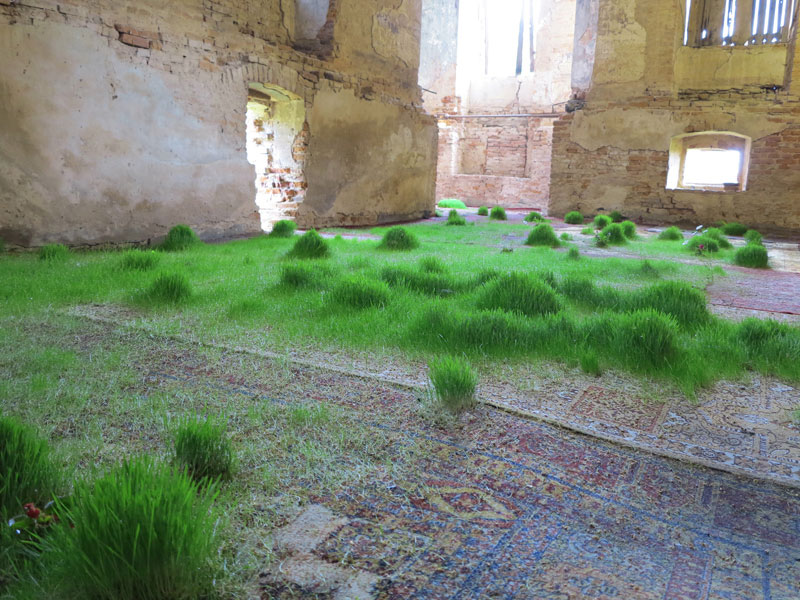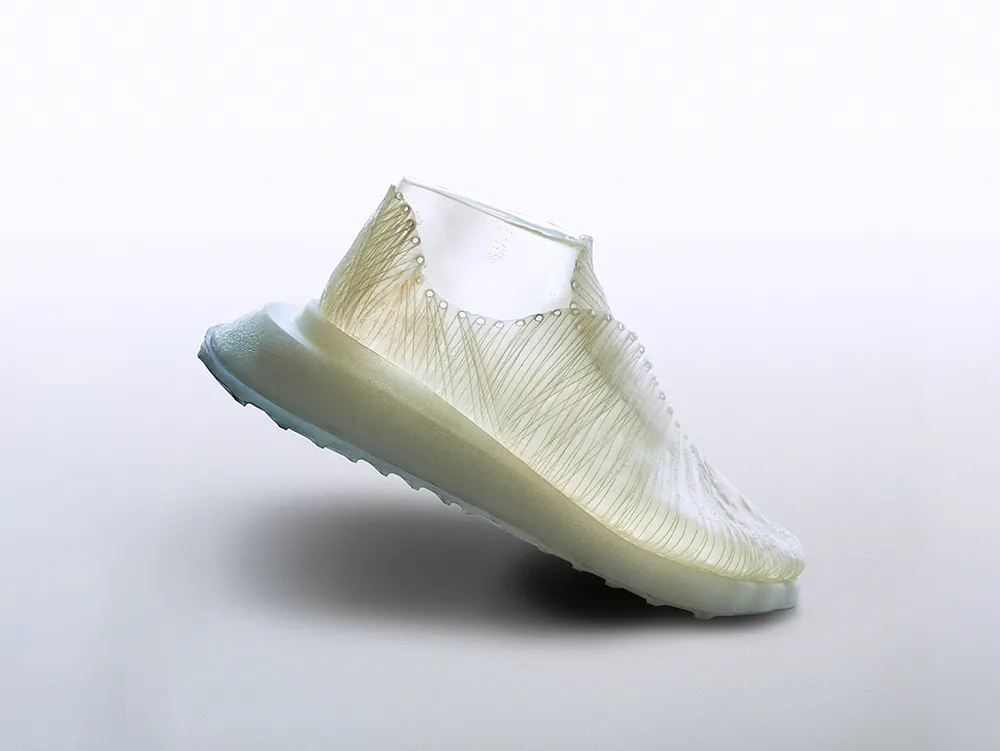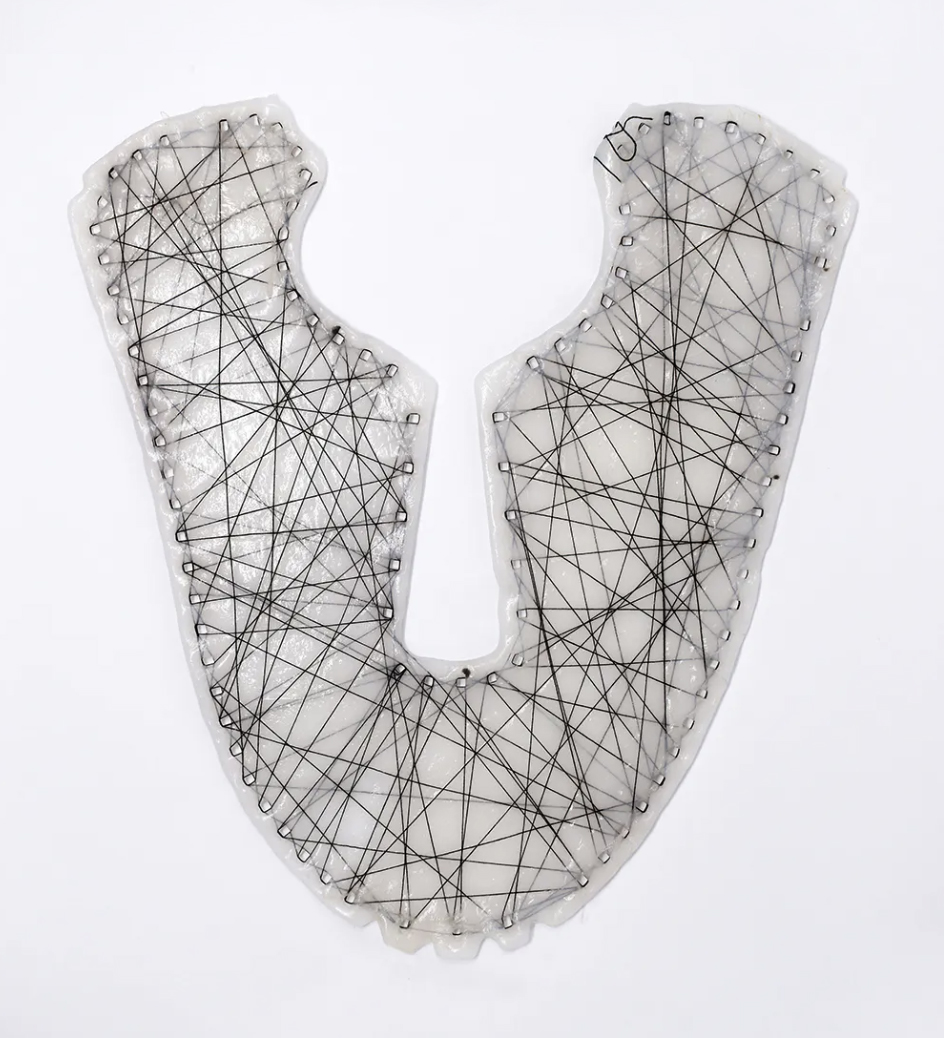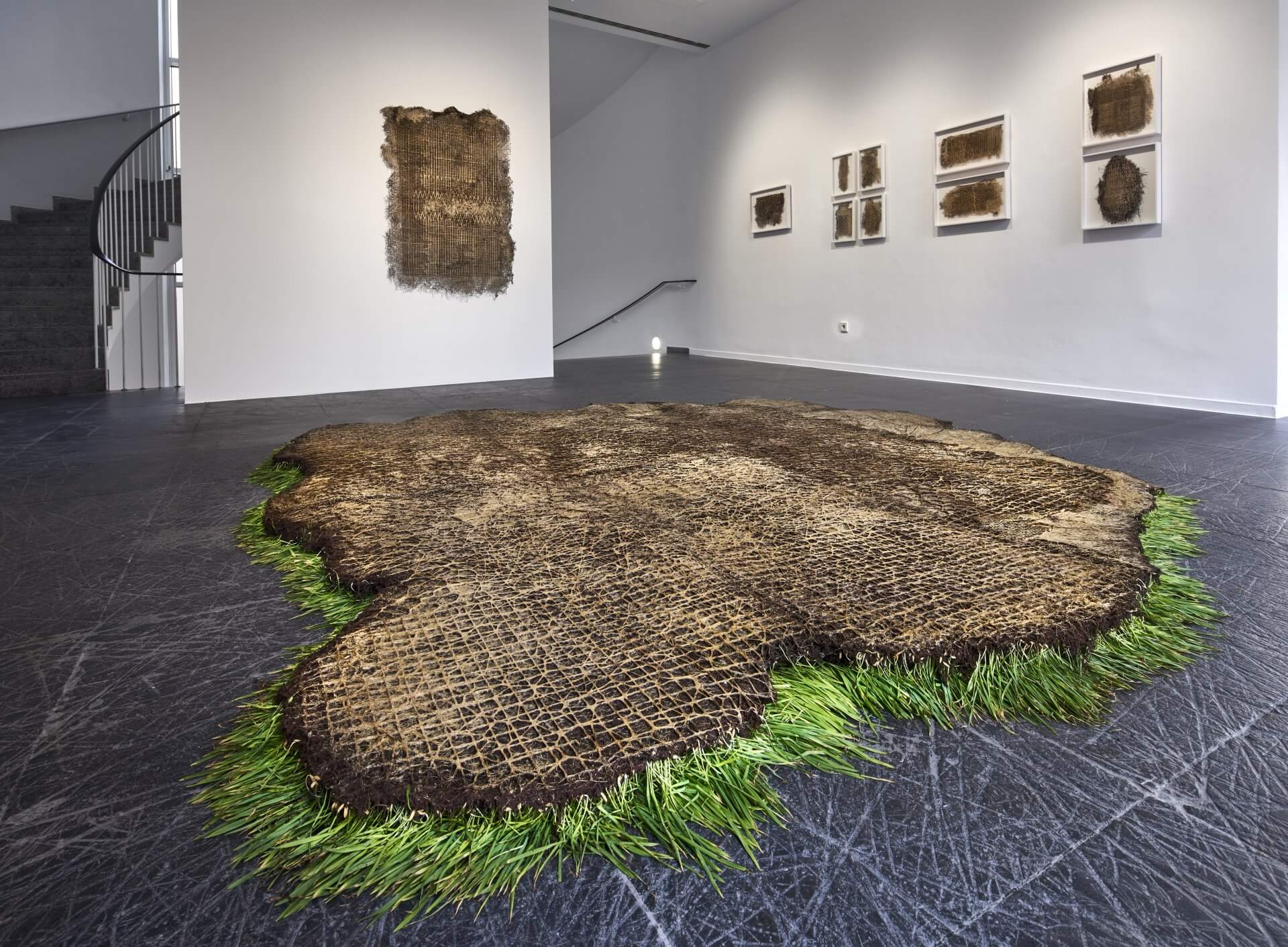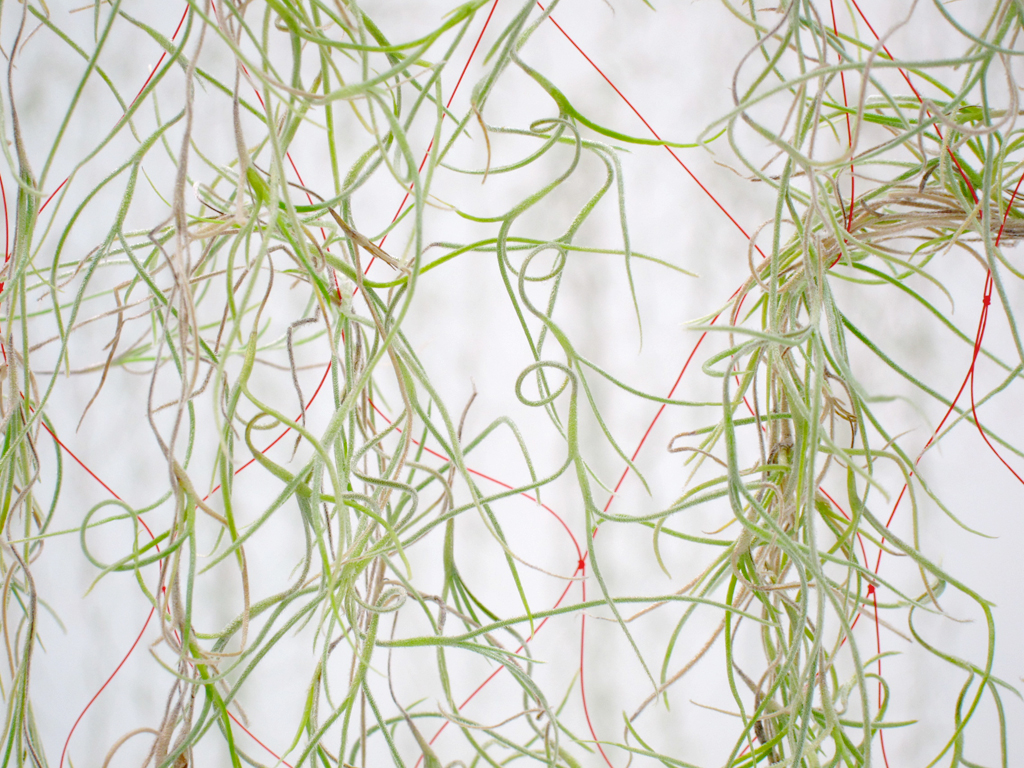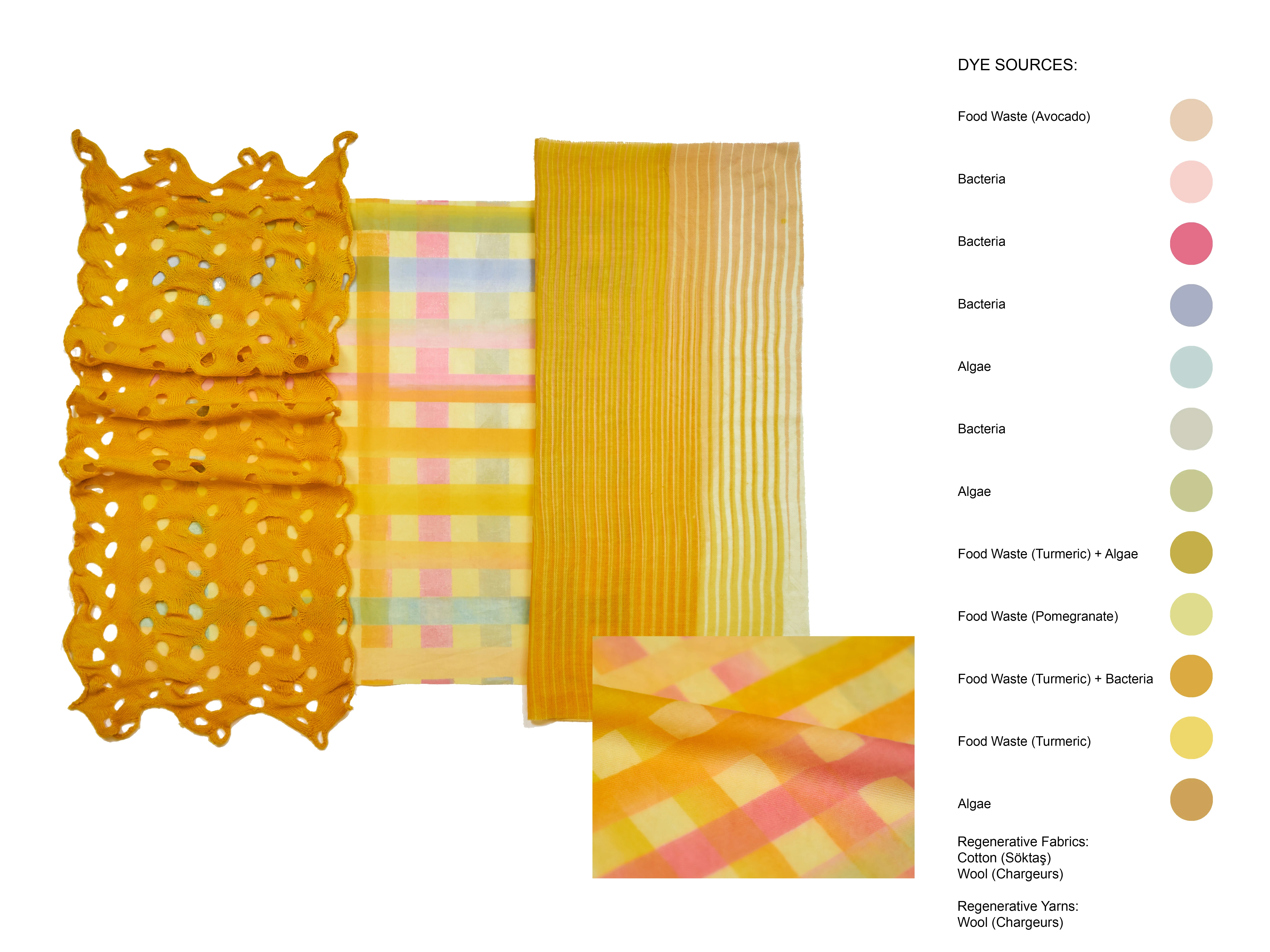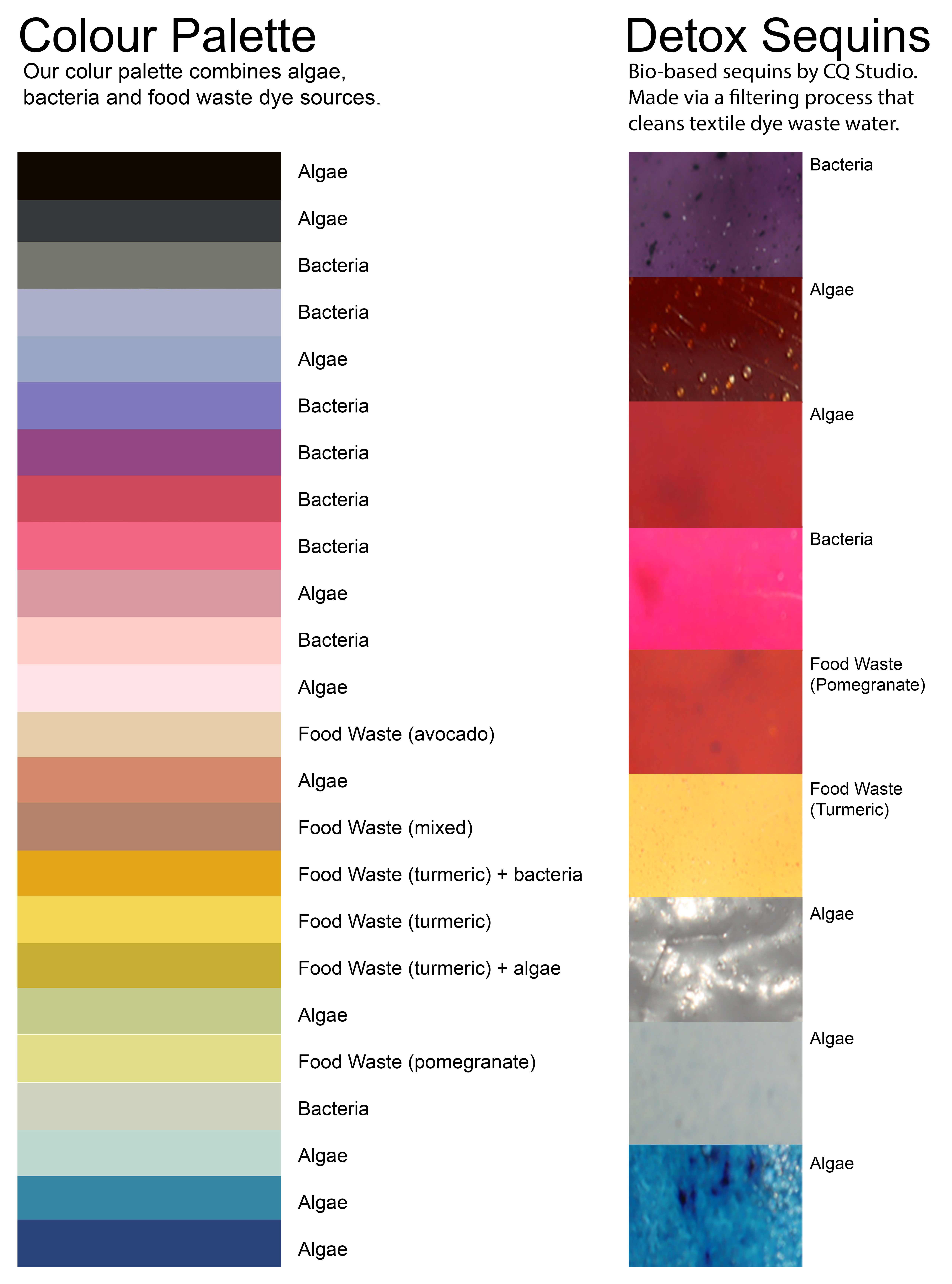The bond between textiles and nature spans millennia. For thousands of years, textiles were exclusively crafted from natural materials.
I've compiled a selection that showcases unique intersections between nature and textiles, offering new perspectives on their connection.
1. Grass on Rugs in a Castle
High-quality carpets are simply overgrown by grasses—a project in which nature takes on a role of disruptive force. The artist grew several different species of grass on an assortment of valuable rugs. Drawing on the representations of gardens that are commonplace on such rugs, the artist created a literal garden within a wide-open space in a castle. The work’s ephemerality and limited lifespan is matched by its inherently experiential quality—the sensual and time-based aspects of the work, such as the damp smell of the grass and its evolving growth, are difficult to appreciate through documentation. The ambivalence of this gesture recalls the futility that is often at the core of Martin Roth’s work, in which an action can be fruitless—in this case, the grass will die off and the rugs will be ruined.2. Green Shades
A rather technical project that I like because textiles enable the growth of plants in cities and contribute to the regeneration of nature.3. Modern Synthesis
This is where science and design create art. This new material has pretty cool properties and a new kind of aesthetic.4. Interwoven
Here, the roots become textile elements and grow into interesting patterns.Diana Scherer is a German-born visual artist living and working in Amsterdam.
Her practice encompasses botany, material research, and sculpture. Scherer explores the relationship of man versus his natural environment. Through her installations she examines the boundaries between plant culture and nature. What does “natural” mean in the Anthropocene and is man not also nature or a parasitic species on the rest of his environment? For the past few years her fascination has been focused on the dynamics of underground plant parts. She has been captivated by the root system, with its hidden, underground processes. By taking geometric and ordering principles from nature and combining them with traces of humans, Scherer poses a dilemma, as her craft is both a manipulation of natural processes and the possible cultivation of a common path.
5. Living Room
Plants intricately intertwined and assembled in a textile-like fashion, forming a cohesive structure or design.6. Rewilding Textiles
There are so many research projects on natural colouring.Here I like the combination of natural dyes, bacteria, and food waste used to create floral prints.
7. Seaweed Pavilion
Seaweed is the primary material to construct an eco-friendly pavilion, showcasing nature's versatile potential in architectural innovation.
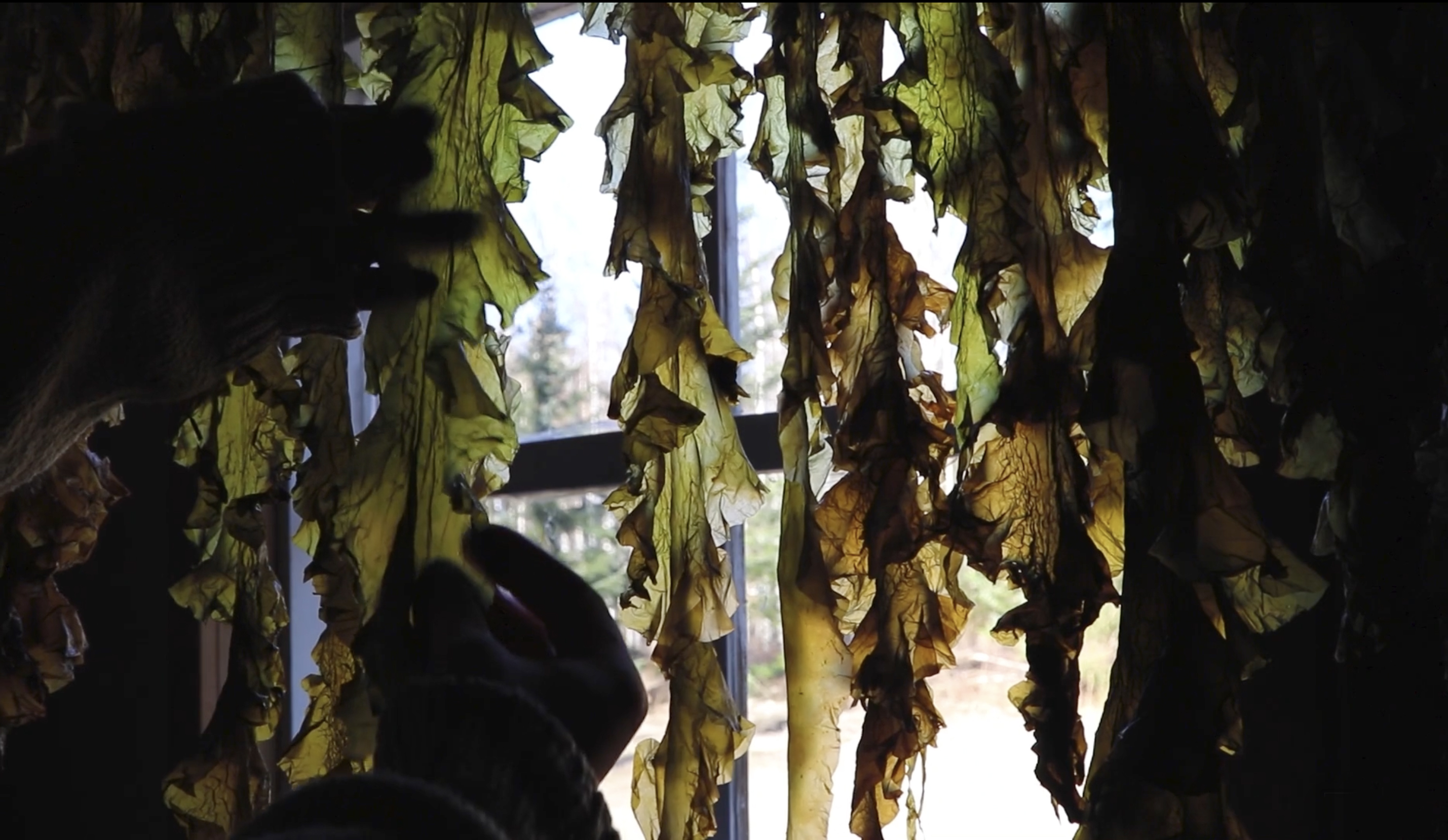
Top: Julia Lohmann, Hidaka Ohmu (2020) and Corpus Maris II (2023), installation view Frankfurter Kunstverein 2023, Photo: Moritz Bernoully, ©Frankfurter Kunstverein, Courtesy: Julia Lohmann Studio
Bottom: Still from KFC - Kristineberg Fry Cone. Anne Hirvonen
8. Landscape Tapestry
Dried plants become a textile element and form interesting landscape-like surfacesOlga Prinku is an artist, maker, and originator of the flowers-on-tulle embroidery craft. Author of Dried Flower Embroidery: An introduction to the art of flowers on tulle, published by Quadrille.
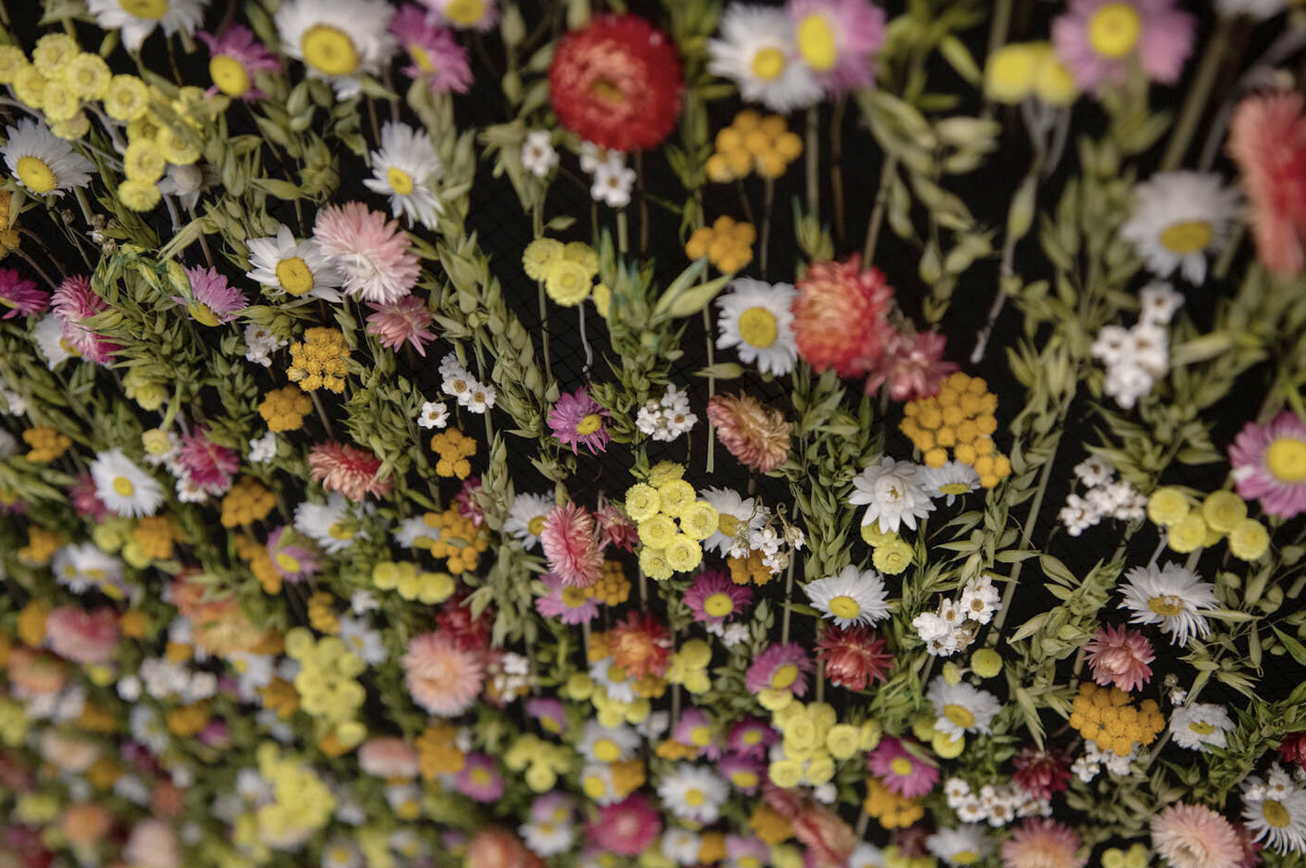

Dried Flower Wall Art Installation at Making Paradise, London 2021 (detail, installation view). Photography credit: Jonathan Goldberg.
9. My Canoe
I have seen many projects with fungus, but this is one of the most humorous. A canoe made of mycellium fibre that grows mushrooms every time it is used.10. Sprout
A dynamic living installation meticulously crafted through weaving techniques, showcasing an intricate interplay of organic elements woven together to form an immersive and vibrant displayInspired by the contribution that fungi make to ecosystems, the London Flower School and their students created an installation that represented mycelia, the underground network of thin threads that connect plant material and fungus. This mixed media installation combined traditional craftsmanship such as weaving with floristry techniques.
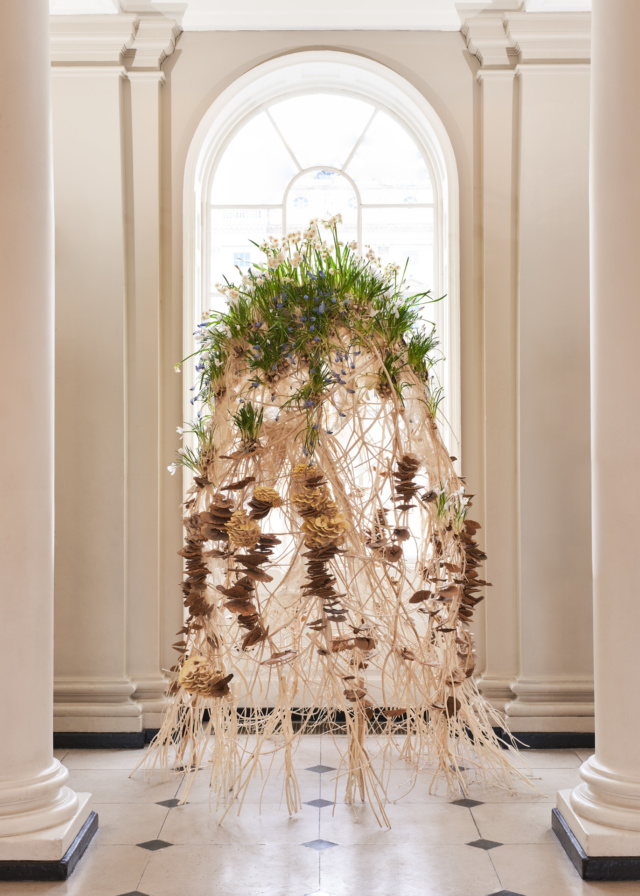
1
http://martinroth.at/en/i-rescued-laboratory-mice-so-they-could-play-swan-lake/
2
https://www.singulargreen.com/
3
https://www.modernsynthesis.com
4
https://www.fkv.de/diana-scherer/
https://dianascherer.nl/
5
https://www.behance.net/gallery/9358425/Living-Room
6
https://www.arts.ac.uk/colleges/central-saintmartins/sustainability
7
https://www.aalto.fi/en/events/hidaka-ohmu-the-seaweed-pavilion
8
https://www.prinku.com/
9
https://www.nbcnews.com/
news/us-news/fungus-answer-climate-change-student-who-grew-mushroom-canoe-says-n1185401
10
https://londonflowerschool.com/project/sprout
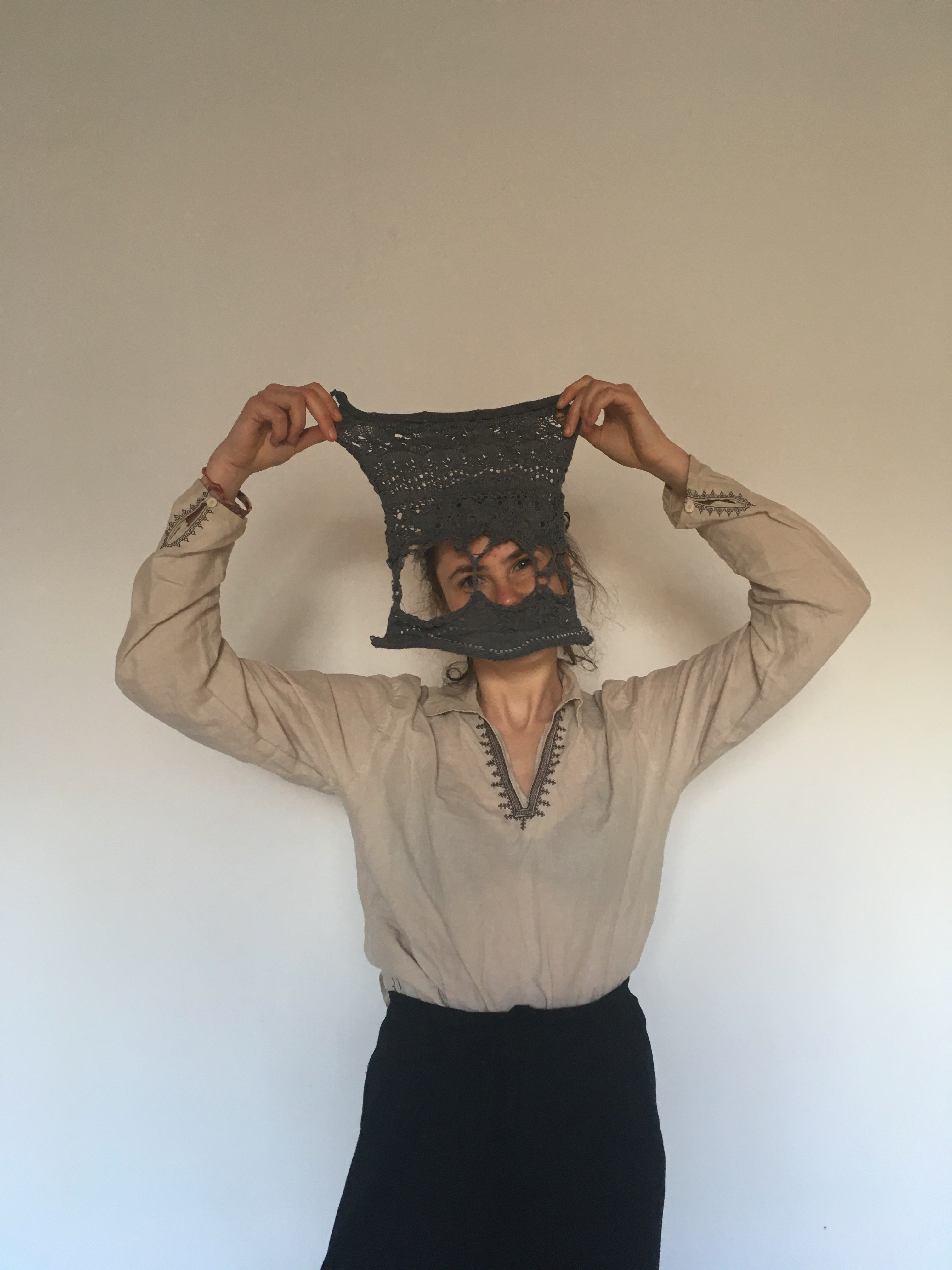
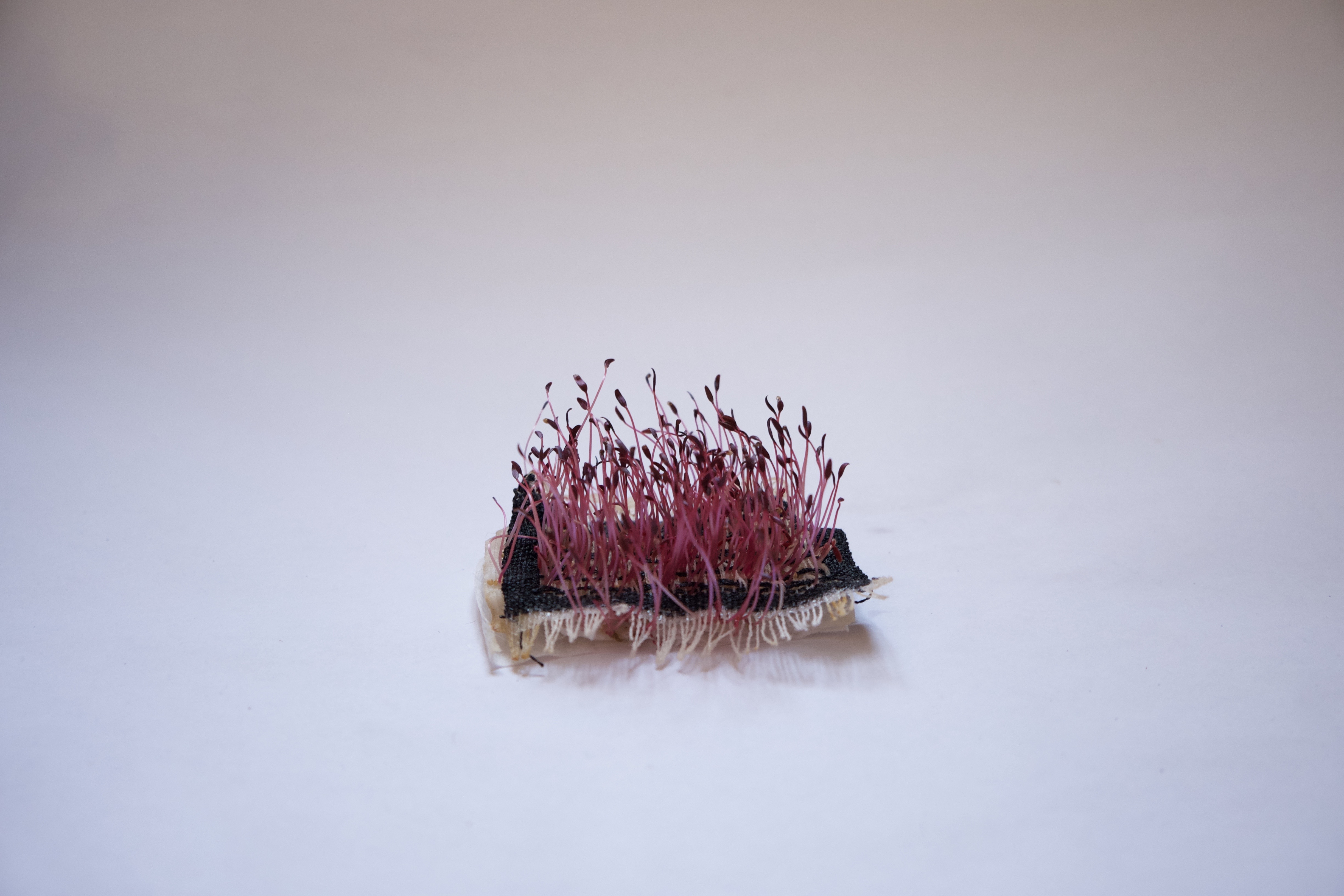
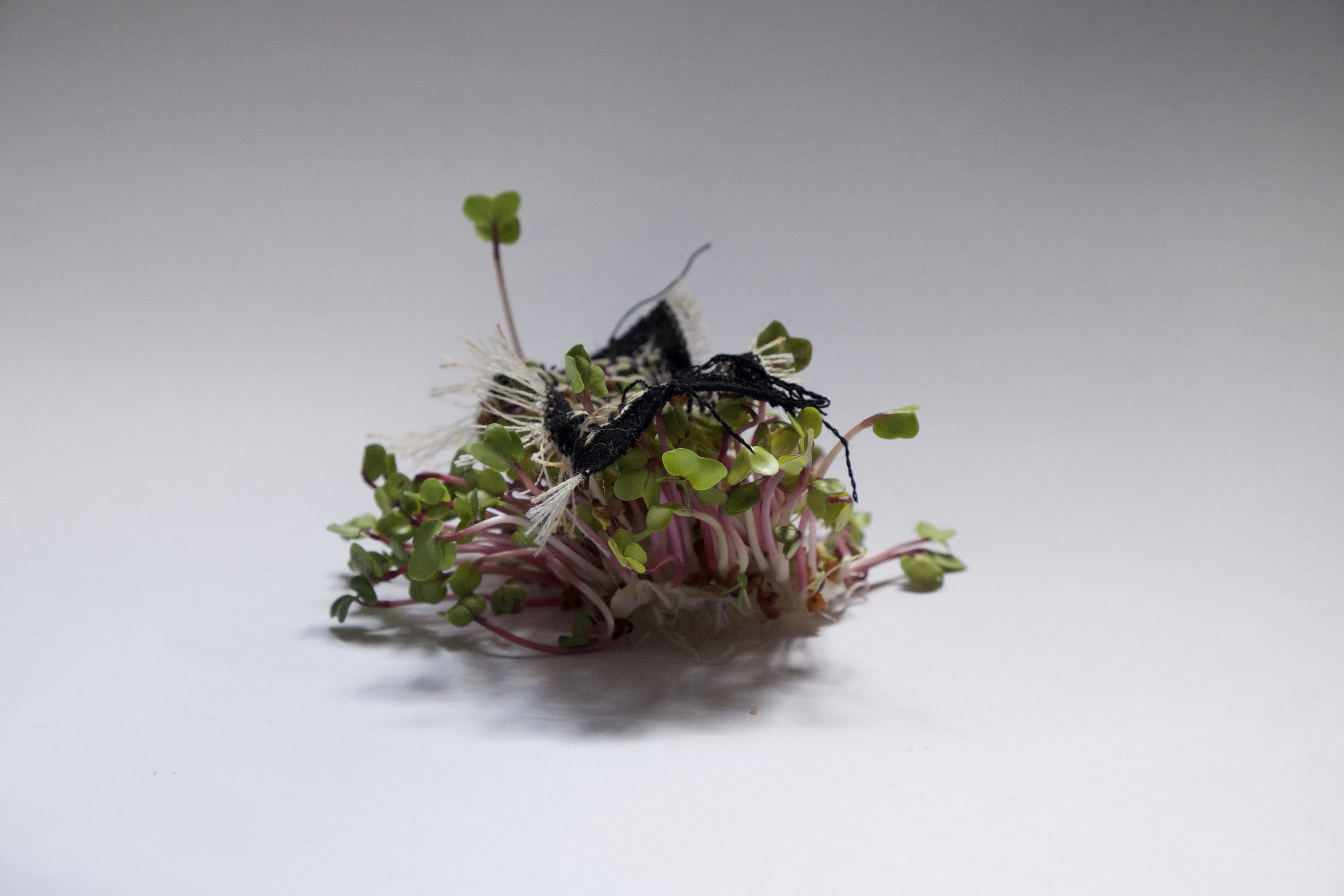
Antonia Ablass is a textile designer exploring the potential of using textiles to grow plants. Her work focuses on the human connection to nature, aiming to enhance this relationship by enabling urban environments to become greener spaces. In her approach, textiles not only fulfill an artistic role but also serve a technical function integral to her system's success. She is based in Halle (Saale), Germany.
